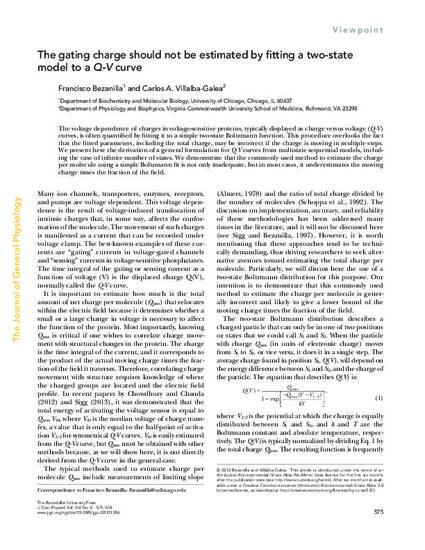
Article
The gating charge should not be estimated by fitting a two-state model to a Q-V curve
The Journal of General Physiology
ORCiD
0000-0002-6489-4651
Document Type
Article
DOI
10.1085/jgp.201311056
Publication Date
12-1-2013
Disciplines
Abstract
The voltage dependence of charges in voltage-sensitive proteins, typically displayed as charge versus voltage (Q-V) curves, is often quantified by fitting it to a simple two-state Boltzmann function. This procedure overlooks the fact that the fitted parameters, including the total charge, may be incorrect if the charge is moving in multiple steps. We present here the derivation of a general formulation for Q-V curves from multistate sequential models, including the case of infinite number of states. We demonstrate that the commonly used method to estimate the charge per molecule using a simple Boltzmann fit is not only inadequate, but in most cases, it underestimates the moving charge times the fraction of the field.
Comments
Authors retain copyright
Creative Commons License
Creative Commons Attribution-NonCommercial 4.0 International
Citation Information
Francisco Bezanilla and Carlos A. Villalba-Galea. "The gating charge should not be estimated by fitting a two-state model to a Q-V curve" The Journal of General Physiology Vol. 142 Iss. 6 (2013) p. 575 - 578 ISSN: 1540-7748 Available at: http://works.bepress.com/carlos-villalba-galea/70/
